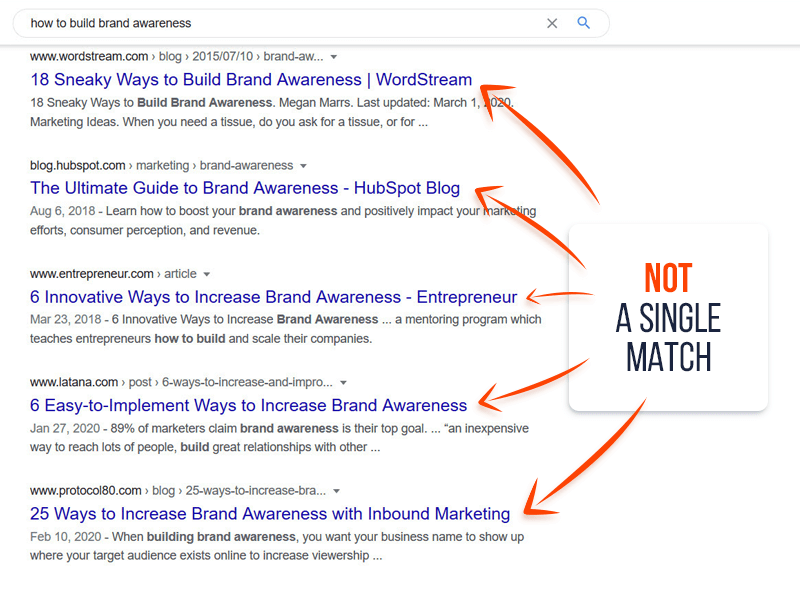
The same SEO strategies used for desktop computers can be applied to mobile optimization. SEO is as simple as adding the most relevant keywords and titles to your meta description. You should also include a brief call-to action (CTA), in your meta descriptions to encourage clicks. Your site's content should include relevant keywords and emojis to grab their attention.
User-friendly content
You will need to take a few additional steps in order to optimize your site for mobile users. It is important to ensure your website is mobile-friendly. Avoid crawl errors and concentrate on the user-experience. Adobe Flash is not supported by many mobile devices so make sure you remove it from your website. Make sure your site is clear and easy to navigate, including large tap targets. Use a large font and make sure you can read your text. Your content should also be optimized for mobile users, as their search intent is different than those of desktop users.
Page speed
Mobile users experience the site in a different way than those who use a desktop computer. Users want information immediately so a slow site can cause a bounce. For this reason, optimizing your site for mobile speed is important. Use tools like Google PageSpeed Insights to check your page speed across various devices. Mobile-friendly websites will load faster for mobile users and have higher conversion rates.

Canonical tags
Canonical tags often make duplicate content worse. The canonical URL should be the destination of the redirect. It shouldn't contain duplicates or close to identical copy. Some SEOs make the mistake of passing link signals using canonical tags. However, this is not the right way to do it. Continue reading to find out how to use canonical tag in your SEO strategies to mobile devices.
Relevant keywords
Local keywords are an essential part of any SEO strategy if you have a mobile site. Local keywords can improve your website's ranking in local search engines. They are easily found via keyword research tools like Keyword Intelligence. To find untapped local keyword opportunities, simply choose your location and language, and the tool will present you with a list of relevant local keywords. Remember that local search volume can vary from one location to the next, so make sure you target keywords that are relevant to your area.
Google SERPs: Featured snippets
Featured snippets are content that appears at the top of search engine results pages (SERPs). These snippets are intended to provide users with the most relevant answers to their queries. Typically, these snippets contain relevant content from top-ranking web pages, making them ideal for reducing clicks. A featured shortcode is a great tool to help your website get SEO.

FAQ
Where Should My Website Be Located?
Your website must be at the top of search results. That means that it needs to appear near the top of every search result. But, there may be hundreds upon pages in some searches. What makes your website different from these competitors?
What are different SEO strategies?
There are three types of SEO strategies: search engine optimization (SEO), Social Media Optimization (SMO) and Pay-per-click Advertising (PPC).
SEO optimizes content using certain keywords. This can be done with text formatting or HTML code.
This makes your site appear higher on search results pages.
Social media optimization is the process of optimizing your website so that it can be used on social networks, such as Twitter, Facebook, or Google+.
These will help build your brand online and make it more popular with visitors who are searching for related subjects.
PPC ads, which show relevant products and services, appear at search engine results pages' top.
The most common type of PPC ad is an advertisement on Google paid search. These ads are expensive but extremely effective.
PPC advertising is also available in display ads as well as video ads and sponsored posts.
Why would I need a SEO strategy?
SEO strategies will help you to maximize your potential for growth. If you don't rank higher in search results, it doesn't make sense to have great content that no one ever finds.
An effective SEO strategy will help you establish relationships with industry experts and influencers. Their connections and knowledge can help you learn new tricks and techniques that will allow you to outperform your competition.
Why SEO strategy is important?
SEO (search engine optimization) has the main purpose of increasing traffic to your website by getting as many people to find you using Google.
Search engines such Google, Yahoo!!, Bing and others keep information about websites on servers called crawlers. These crawlers transmit this data back the company's central repository. This allows them search engines to index web sites.
You will get more visitors to your site if it appears higher in the search results. Therefore, you won't be found if you are not visible in these searches.
Ranking highly in search engines such as Google and Yahoo is the best way for your site to be found. To achieve this, there are two general methods; paid advertising and natural organic links.
Paid Advertising - Paid advertising includes buying adverts from companies who pay-per-click online ads to appear above other sites in search results. These ads may include banner ads, text ads, pop-ups, e-commerce widgets, etc.
Natural Organic Links – Natural organic links are sites where you have proven your expertise over time. They also show that you have earned the trust and respect of your industry. Through blogging, guest posting and commenting, you can build links over time.
You must continue to invest in both marketing and sales to stay on top of your game.
What are the best tools for on-page optimization?
The best tools for on-page SEO are video embeds, image alt tags, structured data markup, and internal link structure. These issues can be found in this article.
What is On Page SEO?
On-page seo refers the actions that you take on your website to increase its rank in search engines. Things such as site architecture, page titles, meta tags, and image alt text are all part of on-page SEO. Off-page SEO is activities that are not related to your website and will help improve its rankings. These include backlinks, social media shares, press releases, and more.
What Are Some Common Mistakes That People Make While Using SEO
SEO is best done properly. It's important to understand that there are no shortcuts in SEO. To achieve success, you'll need to put in the work required to ensure that your website is optimized properly. Search engines are often tricked by black-hat techniques. This is another common error. Black hat techniques can harm your rankings rather than help them.
Statistics
- : You might have read about the time that I used The Content Relaunch to boost my organic traffic by 260.7%: (backlinko.com)
- 64% of marketers actively create SEO campaigns because they help hit multiple key performance indicators (KPIs), including increasing traffic, helping your site rank for relevant keywords, improving your conversion rate, and much more. (semrush.com)
- Sean isn't alone… Blogger James Pearson recently axed hundreds of blog posts from his site… and his organic traffic increased by 30%: (backlinko.com)
- And 90%+ of these backlinks cite a specific stat from my post: (backlinko.com)
- These guides are designed and coded 100% from scratch using WordPress. (backlinko.com)
External Links
How To
How to choose the perfect SEO strategy for you business
These are some factors that can help you choose the right SEO strategy for your website.
-
Keyword Research
Your primary goal in SEO is to rank high for certain terms. To do this, you need to research keywords that are related to your website. You should also identify negative keyword phrases that don't relate to your audience.
-
Content Strategy
Content marketing is important for all businesses. But eCommerce sites need to ensure their products and services rank high on search results pages. This helps drive sales and increases conversion rates.
Therefore, it is important to create engaging, relevant content that solves or offers solutions.
-
Link Building
Links help you rank high in search engines. To build lasting relationships with other websites, you should focus on building them.
-
Social Media Marketing
You may consider using social media channels to promote the brand. Sharing your material across social media channels can encourage others.
-
Website Structure
While it is true that good design does not necessarily lead to higher rankings, it can have an impact. Simple layouts improve user experience and lead to higher conversions. You must also ensure that your website loads quickly to avoid users leaving before they complete transactions.
-
Mobile Optimization
Mobile devices account for almost half of internet usage today.If your website isn't optimized for mobile, you could lose out on traffic and potential clients.
-
Local Search
This refers to targeting local markets rather than national ones.Local SEO works by optimizing your website for local searches such as "restaurants near me" or "businesses in my area." It is easier for local SEO to rank well because people trust recommendations from relatives, friends, colleagues and colleagues.
-
Ecommerce Website Development
Ecommerce websites benefit from a range of different types of SEO strategies.For example, they often perform best when they're optimized for both desktop and mobile devices. You can rank higher for longer tail keywords.
-
Video Ranking
Video content ranks well in search engines. It ranks highly for longer queries and receives more share.
-
Branding
Branding is the process of designing a logo, product names, and messaging that gives your company its own identity and personality. This allows customers to understand you and your business.
-
Analytics Software
Analytics software allows you to track how visitors interact with your website.The information gathered through analytics can help optimize your efforts and increase conversions.
-
Email List Management
Email lists allow you to send emails directly to your target audience.You can send messages about new products, special offers, and promotions.
-
Blogging
Blogging is another way to generate quality backlinks. Writing blog posts about your business will help you attract links from trusted sources.
-
Customer Satisfaction
Customer satisfaction is one of the most effective ways to get high-quality backlinks.When satisfied customers refer their friends and colleagues to your site, this will result in quality backlinks.
-
Content Marketing
Content marketing involves producing unique, useful, relevant content that educates, entertains, or inspires readers.
Engaging content will build trust with your target market and result in higher conversion rates.